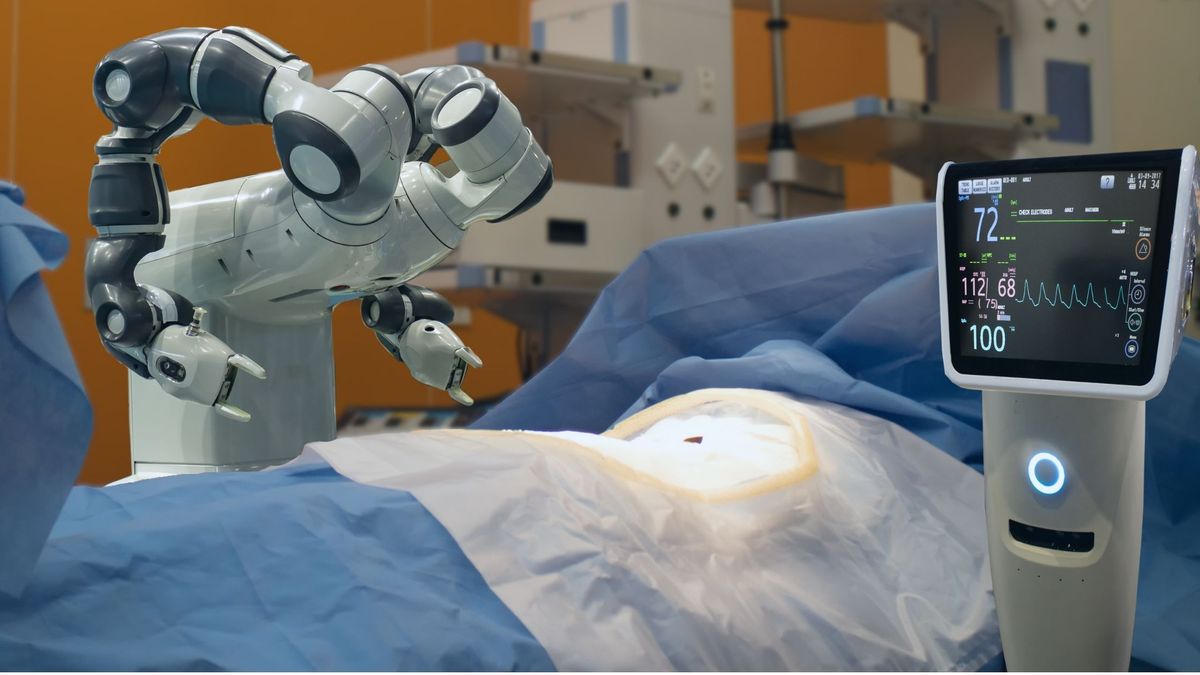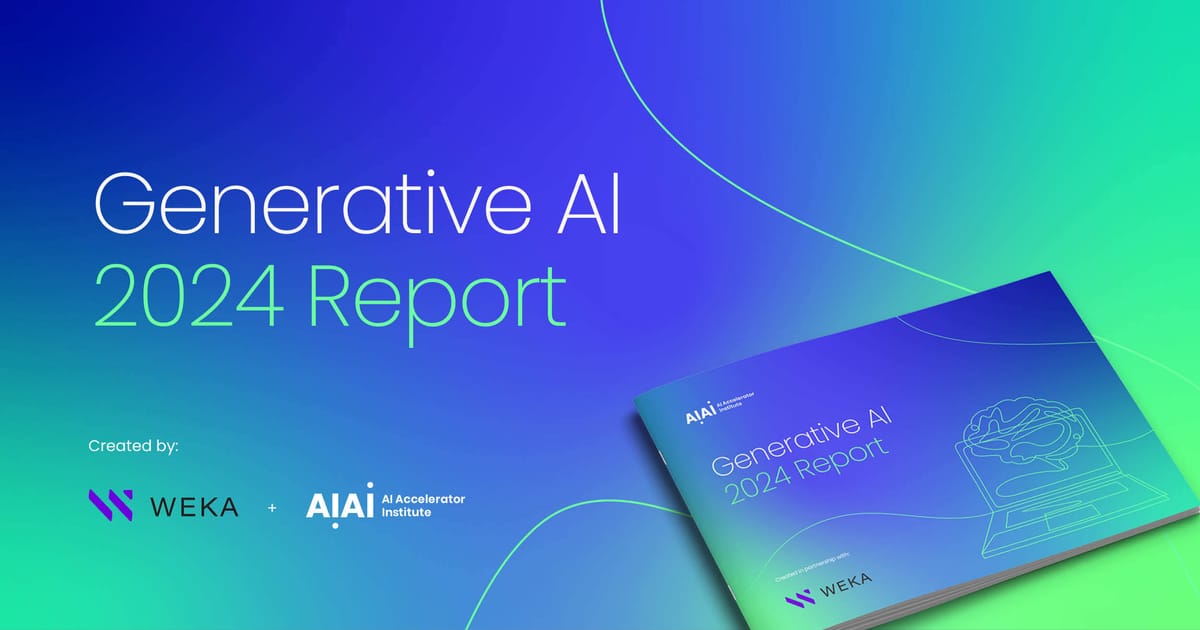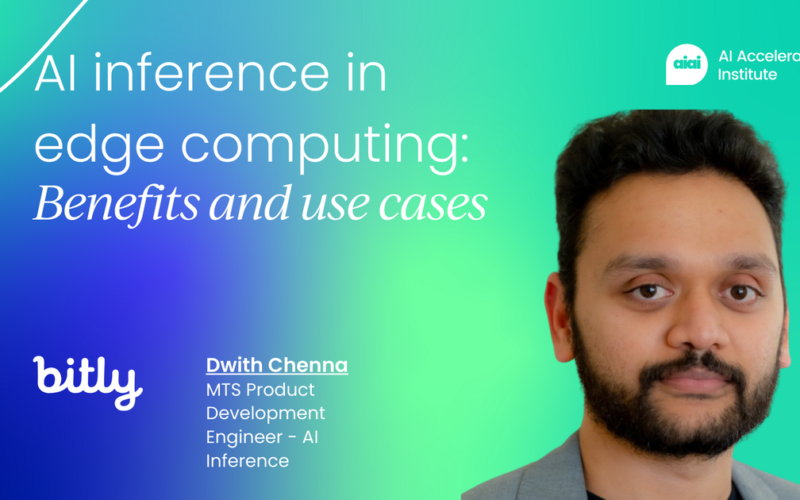As artificial intelligence (AI) continues to evolve, its deployment has expanded beyond cloud computing into edge devices, bringing transformative advantages to various industries.
AI inference at the edge computing refers to the process of running trained AI models directly on local hardware, such as smartphones, sensors, and IoT devices, rather than relying on remote cloud servers for data processing.
This rapid evolution of the technology landscape with the convergence of artificial intelligence (AI) and edge computing represents a transformative shift in how data is processed and utilized.
This shift is revolutionizing how real-time data is analyzed, offering unprecedented benefits in terms of speed, privacy, and efficiency. This synergy brings AI capabilities closer to the source of data generation, unlocking new potential for real-time decision-making, enhanced security, and efficiency.
This article delves into the benefits of AI inference in edge computing and explores various use cases across different industries.
Fig 1. Benefits of AI Inference in edge computing
Real-time processing
One of the most significant advantages of AI inference at the edge is the ability to process data in real-time. Traditional cloud computing often involves sending data to centralized servers for analysis, which can introduce latency due to the distance and network congestion.
Edge computing mitigates this by processing data locally on edge devices or near the data source. This low-latency processing is crucial for applications requiring immediate responses, such as autonomous vehicles, industrial automation, and healthcare monitoring.
Privacy and security
Transmitting sensitive data to cloud servers for processing poses potential security risks. Edge computing addresses this concern by keeping data close to its source, reducing the need for extensive data transmission over potentially vulnerable networks.
This localized processing enhances data privacy and security, making edge AI particularly valuable in sectors handling sensitive information, such as finance, healthcare, and defense.
Bandwidth efficiency
By processing data locally, edge computing significantly reduces the volume of data that needs to be transmitted to remote cloud servers. This reduction in data transmission requirements has several important implications; it results in reduced network congestion, as the local processing at the edge minimizes the burden on network infrastructure.
Secondly, the diminished need for extensive data transmission leads to lower bandwidth costs for organizations and end-users, as transmitting less data over the Internet or cellular networks can translate into substantial savings.
This benefit is particularly relevant in environments with limited or expensive connectivity, such as remote locations. In essence, edge computing optimizes the utilization of available bandwidth, enhancing the overall efficiency and performance of the system.
Scalability
AI systems at edge can be scaled efficiently by deploying additional edge devices as needed, without overburdening central infrastructure. This decentralized approach also enhances system resilience. In the event of network disruptions or server outages, edge devices can continue to operate and make decisions independently, ensuring uninterrupted service.
Energy efficiency
Edge devices are often designed to be energy-efficient, making them suitable for environments where power consumption is a critical concern. By performing AI inference locally, these devices minimize the need for energy-intensive data transmission to distant servers, contributing to overall energy savings.
Hardware accelerator
AI accelerators, such as NPUs, GPUs, TPUs, and custom ASICs, play a critical role in enabling efficient AI inference at the edge. These specialized processors are designed to handle the intensive computational tasks required by AI models, delivering high performance while optimizing power consumption.
By integrating accelerators into edge devices, it becomes possible to run complex deep learning models in real time with minimal latency, even on resource-constrained hardware. This is one of the best enablers of AI, allowing larger and more powerful models to be deployed at the edge.
Offline operation
Offline operation through Edge AI in IoT is a critical asset, particularly in scenarios where constant internet connectivity is uncertain. In remote or inaccessible environments where network access is unreliable, Edge AI systems ensure uninterrupted functionality.
This resilience extends to mission-critical applications, enhancing response times and reducing latency, such as in autonomous vehicles or security systems. Edge AI devices can locally store and log data when connectivity is lost, safeguarding data integrity.
Furthermore, they serve as an integral part of redundancy and fail-safe strategies, providing continuity and decision-making capabilities, even when primary systems are compromised. This capability augments the adaptability and dependability of IoT applications across a wide spectrum of operational settings.
Customization and personalization
AI inference at the edge enables a high degree of customization and personalization by processing data locally, allowing systems to deploy customized models for individual user needs and specific environmental contexts in real-time.
AI systems can quickly respond to changes in user behavior, preferences, or surroundings, offering highly tailored services. The ability to customize AI inference services at the edge without relying on continuous cloud communication ensures faster, more relevant responses, enhancing user satisfaction and overall system efficiency.
The traditional paradigm of centralized computation, wherein these models reside and operate exclusively within data centers, has its limitations, particularly in scenarios where real-time processing, low latency, privacy preservation, and network bandwidth conservation are critical.
This demand for AI models to process data in real time while ensuring privacy and efficiency has given rise to a paradigm shift for AI inference at the edge. AI researchers have developed various optimization techniques to improve the efficiency of AI models, enabling AI model deployment and efficient inference at the edge.
In the next section we will explore some of the use cases of AI inference using edge computing across various industries.
The rapid advancements in artificial intelligence (AI) have transformed numerous sectors, including healthcare, finance, and manufacturing. AI models, especially deep learning models, have proven highly effective in tasks such as image classification, natural language understanding, and reinforcement learning.
Performing data analysis directly on edge devices is becoming increasingly crucial in scenarios like augmented reality, video conferencing, streaming, gaming, Content Delivery Networks (CDNs), autonomous driving, the Industrial Internet of Things (IoT), intelligent power grids, remote surgery, and security-focused applications, where localized processing is essential.
In this section, we will discuss use cases across different fields for AI inference at the edge, as shown in Fig 2.
Fig 1. Applications of AI Inference at the Edge across different fields
Internet of Things (IoT)
The expansion of the Internet of Things (IoT) is significantly driven by the capabilities of smart sensors. These sensors act as the primary data collectors for IoT, producing large volumes of information.
However, centralizing this data for processing can result in delays and privacy issues. This is where edge AI inference becomes crucial. By integrating intelligence directly into the smart sensors, AI models facilitate immediate analysis and decision-making right at the source.
This localized processing reduces latency and the necessity to send large data quantities to central servers. As a result, smart sensors evolve from mere data collectors to real-time analysts, becoming essential in the progress of IoT.
Industrial applications
In industrial sectors, especially manufacturing, predictive maintenance plays a crucial role in identifying potential faults and anomalies in processes before they occur. Traditionally, heartbeat signals, which reflect the health of sensors and machinery, are collected and sent to centralized cloud systems for AI analysis to predict faults.
However, the current trend is shifting. By leveraging AI models for data processing at the edge, we can enhance the system’s performance and efficiency, delivering timely insights at a significantly reduced cost.
Mobile / Augmented reality (AR)
In the field of mobile and augmented reality, the processing requirements are significant due to the need to handle large volumes of data from various sources such as cameras, Lidar, and multiple video and audio inputs.
To deliver a seamless augmented reality experience, this data must be processed within a stringent latency range of about 15 to 20 milliseconds. AI models are effectively utilized through specialized processors and cutting-edge communication technologies.
The integration of edge AI with mobile and augmented reality results in a practical combination that enhances real-time analysis and operational autonomy at the edge. This integration not only reduces latency but also aids in energy efficiency, which is crucial for these rapidly evolving technologies.
Security systems
In security systems, the combination of video cameras with edge AI-powered video analytics is transforming threat detection. Traditionally, video data from multiple cameras is transmitted to cloud servers for AI analysis, which can introduce delays.
With AI processing at the edge, video analytics can be conducted directly within the cameras. This allows for immediate threat detection, and depending on the analysis’s urgency, the camera can quickly notify authorities, reducing the chance of threats going unnoticed. This move to AI-integrated security cameras improves response efficiency and strengthens security at crucial locations such as airports.
Robotic surgery
In critical medical situations, remote robotic surgery involves conducting surgical procedures with the guidance of a surgeon from a remote location. AI-driven models enhance these robotic systems, allowing them to perform precise surgical tasks while maintaining continuous communication and direction from a distant medical professional.
This capability is crucial in the healthcare sector, where real-time processing and responsiveness are essential for smooth operations under high-stress conditions. For such applications, it is vital to deploy AI inference at the edge to ensure safety, reliability, and fail-safe operation in critical scenarios.
Computer vision meets robotics: the future of surgery
Max Allan, Senior Computer Vision Engineer at Intuitive, describes groundbreaking robotics innovations in surgery and the healthcare industry.

Autonomous driving
Autonomous driving is a pinnacle of technological progress, with AI inference at edge taking a central role. AI accelerators in the car empower vehicles with onboard models for rapid real-time decision-making.
This immediate analysis enables autonomous vehicles to navigate complex scenarios with minimal latency, bolstering safety and operational efficiency. By integrating AI at the edge, self-driving cars adapt to dynamic environments, ensuring safer roads and reduced reliance on external networks.
This fusion represents a transformative shift, where vehicles become intelligent entities capable of swift, localized decision-making, ushering in a new era of transportation innovation.
The integration of AI inference in edge computing is revolutionizing various industries by facilitating real-time decision-making, enhancing security, and optimizing bandwidth usage, scalability, and energy efficiency.
As AI technology progresses, its applications will broaden, fostering innovation and increasing efficiency across diverse sectors. The advantages of edge AI are evident in fields such as the Internet of Things (IoT), healthcare, autonomous vehicles, and mobile/augmented reality devices.
These technologies benefit from the localized processing that edge AI enables, promising a future where intelligent, on-the-spot analytics become the standard. Despite the promising advancements, there are ongoing challenges related to the accuracy and performance of AI models deployed at the edge.
Ensuring that these systems operate reliably and effectively remains a critical area of research and development. The widespread adoption of edge AI across different fields highlights the urgent need to address these challenges, making robust and efficient edge AI deployment a new norm.
As research continues and technology evolves, the potential for edge AI to drive significant improvements in various domains will only grow, shaping the future of intelligent, decentralized computing.
Want to know more about how generative companies are using AI?
Get your copy of our Gen AI report below!
Generative AI 2024 report
Unlock the secrets to faster workflows with the Generative AI 2024 Report. Learn how 56.4% of companies leverage AI to boost efficiency and stay competitive.

Source link
lol



